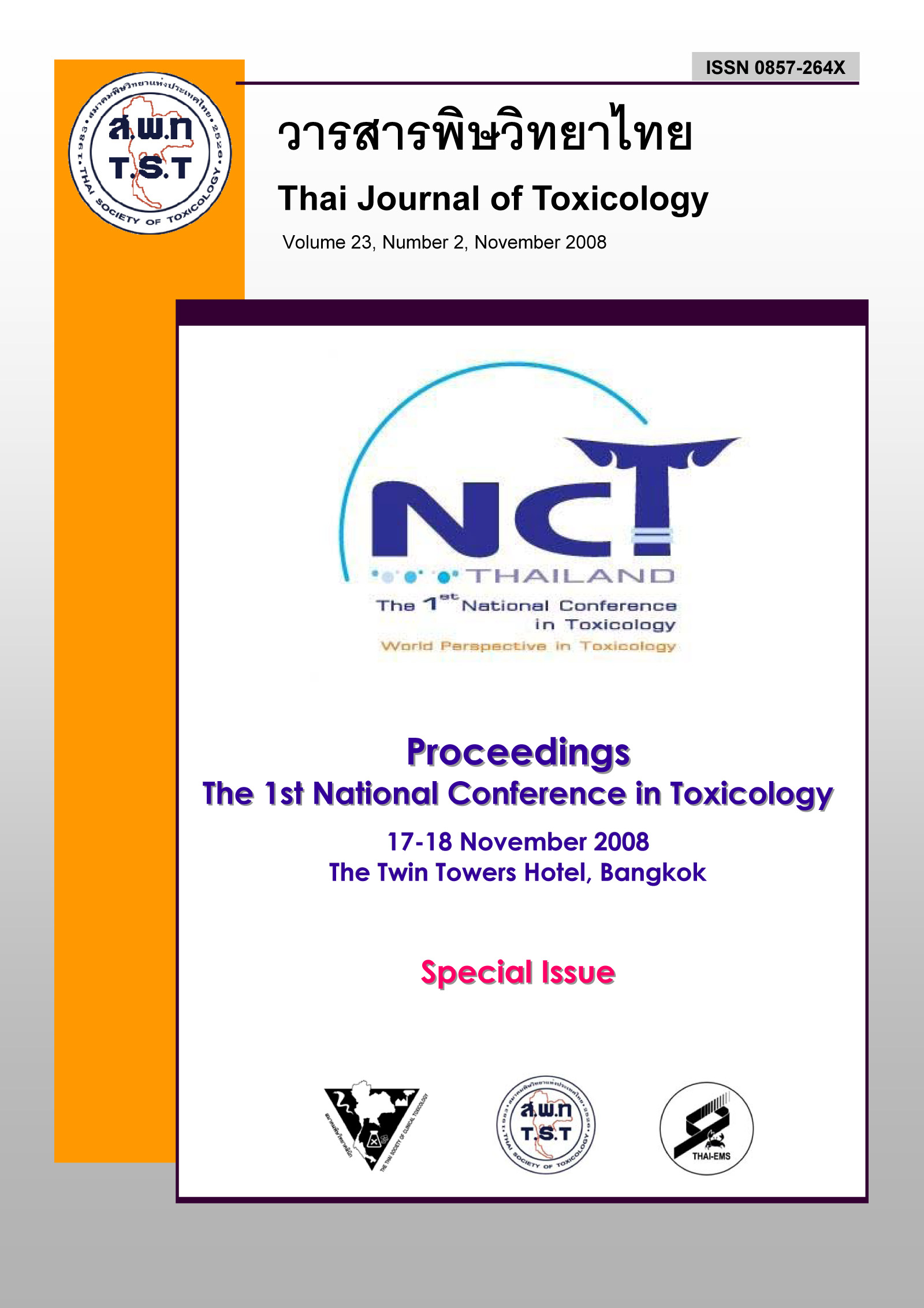Effects of Curcumin on Cadmium-Induced Hepatotoxicity in Rats
Main Article Content
Abstract
Cadmium (Cd), an environmental contaminant, undergoes redox cycling with generation of free radicals inside the biological system. Curcumin, the yellow bioactive component of turmeric has established its antioxidant activities. The present study evaluates possible ameliorating effects of curcumin on Cd acetate induced hepatotoxicity in adult male Wistar rats. The animals were treated once daily by oral gavage for five days and divided into four groups: control, Cd acetate 200 mg/kg BW, curcumin 250 mg/kg BW and pretreatment with curcumin 250 mg/kg BW for one hour before administration with Cd acetate 200 mg/kg BW. After 24 h of the last treatment, the animals were killed to determine the activities of hepatic marker enzymes alanine aminotransferase (ALT) and aspartate aminotransferase (AST) in serum, the level of malondialdehyde (MDA), reduced glutathione (GSH) in liver homogenate and histological changes of liver tissues by light microscope. The results showed that Cd treatment caused a significant increase of serum AST (p <0.001) and ALT (p <0.05), the increased hepatic level of MDA (p <0.01), the decreased hepatic level of reduced GSH (p <0.05) when compared to the control group. In addition, histological examination revealed that Cd treatment also caused hydropic swelling of hepatocyte with vacuolated cytoplasm. This study could provide a possible explanation to hepatotoxicity resulting from exposure to Cd in the environment. In addition, the pretreatment with curcumin before Cd administration could not inhibit the changes against Cd toxicity. Therefore, it was concluded that curcumin at dose of 250 mg/kg BW could not prevent the toxic effects of Cd against oxidative damages in rat liver since no improvement of all parameters by curcumin treatment.


